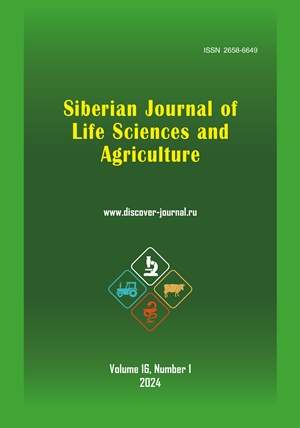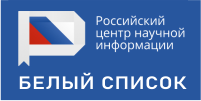ПРОГНОЗИРОВАНИЕ ФИБРОЗА ЛЕГКИХ И РАЗВИТИЕ ХРОНИЧЕСКОЙ ЛЕГОЧНОЙ НЕДОСТАТОЧНОСТИ У БОЛЬНЫХ ПЕРЕНЕСШИХ COVID-19
Аннотация
После выздоровления от COVID-19 многие пациенты жалуются на здоровье. Перенести COVID-19 еще не значит, что теперь можно забыть про больницы. Большинство людей как раз про них вспоминают. Осложнения после вируса не менее опасны, чем само заболевание. Поэтому пациенты перенесшие коронавирус проходят углубленную диспансеризацию. Пока лихорадочно мы будем разрабатывать эффективное лечение острой фазы вируса, не стоит забывать о серьезных последствиях перенесенного COVID-19. Для этого мы рассмотрим и попытаемся проанализировать наиболее опасные осложнения после COVID-19.
Цель исследования. Описать результаты пандемии COVID-19 для поправившихся, с заострением внимания на большой потребности в идентификации биомаркеров, способствующих на начальной стадии заболевания определять пациентов, у которых может развиться фиброзная интерстициальная легочная патология (фиброз легких).
При обнаружении проявлений COVID-19 и выполнении дальнейшего лечения следует учитывать,что инфекционный процесс после устранения вируса из организма в большинстве случаев не прекращается и может перейти в длительное поражение легких, в частности, фиброзное интерстициальное заболевание легких.
В литературном обзоре выполнен анализ современных российских и зарубежных (исключительно на английском языке) научных работ, значимых относительно темы обзора и представленных в базах данных eLibrary, PubMed, Scopus и в научной электронной библиотеке «КиберЛенинка» (Cyberleninka).
Скачивания
Литература
Игнатова Г.Л., Антонов В.Н. Терапевтические возможности реабилитации пациентов, перенесших COVID-19, с остаточными изменениями легочной ткани // Consilium Medicum. 2022. Т. 24, № 3. С. 177-181 (Ignatova G.L., Antonov V.N. Therapeutic possibilities of rehabilitation of patients who have undergone COVID-19 with residual changes in the lungs: A review. Consilium Medicum, 2022, vol. 24(3), pp. 177-181). https://doi.org/10.26442/20751753.2022.3.201427
Aneta A., Gianfranco S., Antonio P.B., Alessandro P., Federico F., Milijana J., Giulia G. Biomarkers in the management of acute heart failure: state of the art and role in COVID-19 era. ESC Heart Failure, 2021, vol. 8(6), pp. 4465-4483. https://doi.org/10.1002/ehf2.13595
Awad M.R., El-Gamel A., Hasleton P., Turner D.M., Sinnot P.J., Hutchinson I.V. Genotypic variation in the transforming growth factor-β1 gene. Transplantation, 1998, vol. 66(8), pp. 1014-1020. https://doi.org/10.1097/00007890-199810270-00009
Awano N., Inomata M., Kuse N., et al. Serum KL-6 level is a useful biomarker for evaluating the severity of coronavirus disease 2019. Respir Investig, 2020, vol. 58(6), pp. 440-447. https://doi.org/10.1016%2Fj.resinv.2020.07.004
Cui H., Xie N., Thannickal V.J., Liu G. The code of non-coding RNAs in lung fibrosis. Cell Mol Life Sci, 2015. vol. 72(18), pp. 3507-3519. https://doi.org/10.1007/s00018-015-1939-6
Du Bois R. M. The genetic predisposition to interstitial lung disease. Chest, 2002. vol. 121, pp. 14-20.
Fulmer J.D., Sposovska M.S., von Gal F.R., Crystal R.G., Mittal K.K. Distribution of HLA antigens in idiopathic pulmonary fibrosis. Am Rev Respir Dis, 1978. vol. 118(1), pp. 141-147. https://doi.org/10.1164/arrd.1978.118.1.141
Geddes D.M., Webley M., Brewerton D.A., Turton C.W., Turner-Warwick M., Murphy A.H., Ward A.M. α1-Antitrypsin phenotypes in fibrosing alveolitis and rheumatoid arthritis. Lancet, 1977, pp. 1049-1051. https://doi.org/10.1016/s0140-6736(77)91883-9
Gordon A.C., Mouncey P.R., Al-Beidh F., et al. Interleukin-6 receptor antagonists in critically ill patients with Covid-19. N Engl J Med., 2021, vol. 384(16), pp. 1491-1502. https://doi.org/10.1056/NEJMoa2100433
Grifoni E., Valoriani A., Cei F., et al. Interleukin-6 as prognosticator in patients with COVID-19. J Infect, 2020. no. 81(3), pp. 452-482. https://doi.org/10.1016/j.jinf.2020.06.008
Hamai K., Iwamoto H., Ishikawa N., et al. Comparative study of circulating MMP-7, CCL18, KL-6, SP-A, and SP-D as disease markers of idiopathic pulmonary fibrosis. Dis Markers, 2016, pp. 47-59. https://doi.org/10.1155/2016/4759040
Huang L.S., Mathew B., Li H., Zhao Y., Ma S.F., Noth I., Reddy S.P., Harijith A., Usatyuk P.V., Berdyshev E.V., Kaminski N., Zhou T., Zhang W., Zhang Y., Rehman J., Kotha S.R., Gurney T.O., Parinandi N.L., Lussier Y.A., Garcia J.G., Natarajan V. The mitochondrial cardiolipin remodeling enzyme lysocardiolipin acyltransferase is a novel target in pulmonary fibrosis. Am J Respir Crit Care Med, 2014, vol. 189(11), pp. 1402-1415. https://doi.org/10.1164/rccm.201310-1917oc
Hutyrová B., Pantelidis P., Drábek J., Zurková M., Kolek V., Lenhart K., Welsh K., du Bois R. M., Petrek M. Interleukin-1 gene cluster polymorphisms in sarcoidosis and idiopathic pulmonary fibrosis. Am J Respir Crit Care Med, 2002, vol. 165(2), pp. 148-151. https://doi.org/10.1164/ajrccm.165.2.2106004
Ikeda K., Chiba H., Nishikiori H., et al. Serum surfactant protein D as a predictive biomarker for the efficacy of pirfenidone in patients with idiopathic pulmonary fibrosis: a post-hoc analysis of the phase 3 trial in Japan. Respir Res, 2020, vol. 21 (1), 316. https://doi.org/10.1186/s12931-020-01582-y
Inoue Y., Kaner R. J., Guiot J., et al. Diagnostic and prognostic biomarkers for chronic fibrosing interstitial lung diseases wth a progressive phenotype. Chest, 2020, vol. 158(2), pp. 646-659. https://doi.org/10.1016/j.chest.2020.03.037
Kaufmann C.C., Ahmed A., Burger A.L., Muthspiel M., Jäger B., Wojta J., Huber K. Biomarkers Associated with Cardiovascular Disease in COVID-19. Cells, 2022 Mar 8, vol. 11(6), 922. https://doi.org/10.3390/cells11060922
Khalil N., O'Connor R.N., Unruh H.W., Warren P.W., Flanders K.C., Kemp A., Bereznay O.H., Greenberg A.H. Increased production and immunohistochemical localization of transforming growth factor-β in idiopathic pulmonary fibrosis. Am J Respir Cell Mol Biol, 1991, vol. 5(2), pp. 155-162. https://doi.org/10.1165/ajrcmb/5.2.155
Ko U.W., Cho E.J., Oh H.B., Koo H.J., Do K.H., Song J.W. Serum Krebs von den Lungen-6 level predicts disease progression in interstitial lung disease. PLoS One, 2020, vol. 15(12). https://doi.org/10.1371/journal.pone.0244114
Kropski J.A., Blackwell T.S., Loyd J.E. The genetic basis of idiopathic pulmonary fibrosis. Eur Respir J, 2015, vol. 45(6), pp. 1717-1727. https://doi.org/10.1183/09031936.00163814
Li P., Li J., Chen T., Wang H., Chu H., Chang J., Zang W., Wang Y., Ma Y., Du Y., Zhao G., Zhang G. Expression analysis of serum microRNAs in idiopathic pulmonary fibrosis. Int J Mol Med, 2014, vol. 33(6), pp. 1554-1562. https://doi.org/10.3892/ijmm.2014.1712
Mori M., Kida H., Morishita H., Goya S., Matsuoka H., Arai T., Osaki T., Tachibana I., Yamamoto S., Sakatani M., et al. Microsatellite instability in transforming growth factor-β1 type II receptor gene in alveolar lining epithelial cells of idiopathic pulmonary fibrosis. Am J Respir Cell Mol Biol, 2001, vol. 24(4), pp. 398-404. https://doi.org/10.1165/ajrcmb.24.4.4206
Nakao A., Fujii M., Matsumura R., Kumano K., Saito Y., Miyazono K., Iwamoto I. Transient gene transfer and expression of Smad7 prevents bleomycin-induced lung fibrosis in mice. J Clin Invest, 1999, vol. 104(1), pp. 5-11. https://doi.org/10.1172/jci6094
Noth I., Zhang Y., Ma S. F., Flores C., Barber M., Huang Y., Broderick S. M., Wade M. S., Hysi P., Scuirba J., Richards T. J., Juan-Guardela B. M., Vij R., Han M. K., Martinez F. J., Kossen K., Seiwert S. D., Christie J. D., Nicolae D., Kaminski N., Garcia J. G. Genetic variants associated with idiopathic pulmonary fibrosis susceptibility and mortality: a genome-wide association study. Lancet Respir Med, 2013, vol. 1(4), pp. 307-309. https://doi.org/10.1016/s2213-2600(13)70045-6
Pantelidis P., Fanning G. C., Wells A. U., Wellsh K. I., du Bois R. M. Analysis of tumor necrosis factor-α, lymphotoxin-α, tumor necrosis factor receptor II, and interleukin-6 polymorphisms in patients with idiopathic pulmonary fibrosis. Am J Respir Crit Care Med, 2001, vol. 163(6), pp. 1432-1436. https://doi.org/10.1164/ajrccm.163.6.2006064
Renzoni E., Lympany P., Sestini P., Pantelidis P., Wells A., Black C., Welsh K., Bunn C., Knight C., Foley P., et al. Distribution of novel polymorphisms of the interleukin-8 and CXC receptor 1 and 2 genes in systemic sclerosis and cryptogenic fibrosing alveolitis. Arthritis Rheum, 2000, vol. 43(7), pp. 1633-1640. https://doi.org/10.1002/1529-0131(200007)43:7%3C1633::aid-anr29%3E3.0.co;2-9
Riha R. L., Yang I. A., Rabnott G. C., Tunnicliffe A. M., Fong K. M., Zimmerman P. V. Cytokine gene polymorphisms in idiopathic pulmonary fibrosis. Intern Med J., 2004, vol. 34(3), pp. 126-129. https://doi.org/10.1111/j.1444-0903.2004.00503.x
Santana A., Saxena B., Noble N. A., Gold L. I., Marshall B.C. Increased expression of transforming growth factor β isoforms (β1, β2, β3) in bleomycin induced pulmonary fibrosis. Am J Respir Cell Mol Biol, 1995, vol. 13(1), pp. 34-44. https://doi.org/10.1165/ajrcmb.13.1.7541221
Selman M., King T. E., Pardo A. Idiopathic pulmonary fibrosis: prevailing and evolving hypotheses about its pathogenesis and implications for therapy. Ann Intern Med, 2001, vol. 134(2), pp. 136-151. https://doi.org/10.7326/0003-4819-134-2-200101160-00015
Stock C.J., Soto H., Fonseca C., Banya W.A., Molyneaux P.L., Adam ali H., Russell A.M., Denton C.P., Abraham D.J., Hansel D.M., Nicholson A.G., Mahler T.M., Wells A.U., Lindahl G.E., Renzoni E.A. Mucin 5B promoter polymorphism is associated with idiopathic pulmonary fibrosis but not with development of lung fibrosis in systemic sclerosis or sarcoidosis. Thorax, 2013, vol. 68(5), pp. 436-441. https://doi.org/10.1136/thoraxjnl-2012-201786
Stuart B.D., Lee J.S., Kozlitina J., Noth I., Devine M.S., Glazer C.S., Torres F., Kaza V., Girod C.E., Jones K.D., Elicker B.M., Ma S.F., Vij R., Collard H.R., Wolters P.J., Garcin C.K. Effect of telomere length on survival in patients with idiopathic pulmonary fibrosis: an observational cohort study with independent validation. Lancet Respir Med, 2014, vol. 2(7), pp. 557-565. https://doi.org/10.1016/s2213-2600(14)70124-9
Tzouvelekis A., Herazo-Maya J. D., Slade M., et al. Validation of the prognostic value of MMP-7 in idiopathic pulmonary fibrosis. Respirology, 2017, vol. 22(3), pp. 486-493. https://doi.org/10.1111%2Fresp.12920
Vázquez de Lara L., Becerril C., Montaño M., et al. Surfactant components modulate fibroblast apoptosis and type I collagen and collagenase-1 expression. Am J Physiol Lung Cell Mol Physiol, 2000, vol. 279(5). https://doi.org/10.1152/ajplung.2000.279.5.l950
Whyte M., Hubbard R., Meliconi R., Whidborne M., Eaton V., Bingle C., Timms J., Duff G., Facchini A., Pacilli A., et al. Increased risk of fibrosing alveolitis associated with interleukin-1 receptor antagonist and tumor necrosis factor-α gene polymorphisms. Am J Respir Crit Care Med, 2000, vol. 162(2 Pt 1), pp. 755-758. https://doi.org/10.1164/ajrccm.162.2.9909053
Yang I.V., Schwartz D.A. Epigenetics of idiopathic pulmonary fibrosis. Transl Res, 2015, vol. 165(1), pp. 48-60. https://doi.org/10.1016/j.trsl.2014.03.011
Ziesche R., Hofbauer E., Witmann K., Petkov V., Block L. H. A preliminary study of long-term treatment with interferon γ-1b and low-dose prednisolone in patients with idiopathic pulmonary fibrosis. N Engl J Med, 1999, vol. 341(17), pp. 1264-1269. https://doi.org/10.1056/nejm199910213411703
Zou J. N., Sun L., Wang B. R., et al. The characteristics and evolution of pulmonary fibrosis in COVID-19 patients as assessed by AI-assisted chest HRCT. PLoS One, 2021, vol. 16(3). https://doi.org/10.1371/journal.pone.0248957
Просмотров аннотации: 155 Загрузок PDF: 64
Copyright (c) 2024 Diana B. Balinyan, Olga A. Efremova, Lyudmila A. Kamyshnikova, Vladislav A. Dubrova, Alexey Yu. Blagov

Это произведение доступно по лицензии Creative Commons «Attribution-NonCommercial-NoDerivatives» («Атрибуция — Некоммерческое использование — Без производных произведений») 4.0 Всемирная.






















































